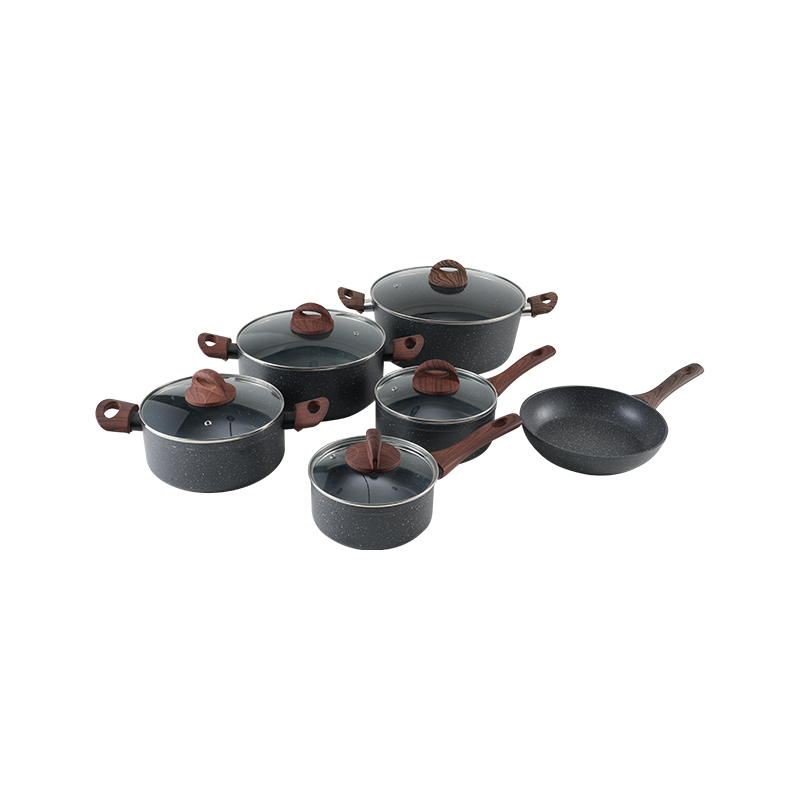Are Aluminum Pots and Pans Better for Boiling or Sauteing?
May 15, 2025
Aluminum cookware has long been a staple in both home kitchens and professional culinary settings. Lightweight, highly conductive, and generally affordable, aluminum offers a range of benefits that make it a top choice for various cooking methods. However, many home cooks still ask: are aluminum pots and pans better for boiling or sauteing?

Let's begin by looking at boiling. This method requires a pot that can quickly bring liquids to temperature and maintain that heat efficiently. Aluminum pots and pans excel in this regard due to their outstanding thermal conductivity. Heat spreads evenly throughout the base and sides of the cookware, allowing for faster boiling times. When using a large aluminum casserole pan, for example, you'll notice that water or broth reaches a rolling boil faster than it might in a comparable stainless steel pot. This makes aluminum an outstanding choice for boiling pasta, blanching vegetables, or preparing soups and stews.
Many modern aluminum pots and pans come with a non stick casserole pot design that not only aids in quick heating but also ensures that food doesn't cling to the bottom as easily. This is especially useful when boiling starchy ingredients like rice or potatoes, which are notorious for sticking. The non-stick surface allows for effortless cleanup, saving time and effort after a long day in the kitchen.
When it comes to sauteing—a technique that requires controlled heat and responsive cookware—aluminum pots and pans still hold their ground. The quick heat response of aluminum allows cooks to adjust temperatures rapidly, which is essential for achieving a great saute without burning or overcooking. A shallow aluminum casserole pan can be particularly effective for sauteing vegetables, meats, or tofu, giving you enough surface area to spread ingredients evenly while maintaining precise heat.
That said, one must also consider the type of coating on the pan. A non stick casserole pot is ideal for sauteing delicate ingredients such as fish, eggs, or thinly sliced vegetables, as it prevents sticking and tearing. It also requires less oil, promoting healthier cooking. While traditional saute pans are typically made of stainless steel or cast iron, many modern chefs appreciate the versatility of a deep aluminum casserole pan with a non-stick surface when preparing multi-step recipes that involve both sauteing and simmering.
Another factor to keep in mind is weight and maneuverability. Aluminum pots and pans are significantly lighter than cast iron or fully clad stainless steel options, making them easier to handle during tasks that require quick wrist action or tilting the pan for sauce reduction. This makes them more user-friendly for people who prefer lightweight tools or have mobility limitations.
Additionally, manufacturers have been improving the design of the non stick casserole pot to enhance its versatility. Some of these pots are now oven-safe and come with tempered glass lids, allowing for seamless transitions from stovetop to oven—a useful feature for finishing a sauteed dish with a bake or broil.
Despite the benefits, users should be cautious when cooking with aluminum pots and pans over high heat, especially when using uncoated versions. Aluminum can react with acidic ingredients like tomatoes or vinegar, potentially altering the flavor of the dish. However, coated models, such as those with anodized surfaces or non stick casserole pot features, eliminate this concern.
In commercial settings, chefs frequently use aluminum casserole pans due to their practicality and affordability. Their ability to withstand constant use, paired with even heat distribution, makes them a reliable workhorse in high-volume kitchens. At home, their functionality is just as appreciated, especially in smaller kitchens where one pot often needs to serve multiple roles.
Whether you're using a classic aluminum casserole pan for a rich beef stew or a non stick casserole pot to gently saute mushrooms and garlic, aluminum cookware provides the flexibility and efficiency that modern cooks need. The key lies in understanding how different aluminum designs and coatings influence performance, allowing you to choose the great pan for your cooking style.
 English
English русский
русский Français
Français Español
Español Português
Português عربى
عربى














